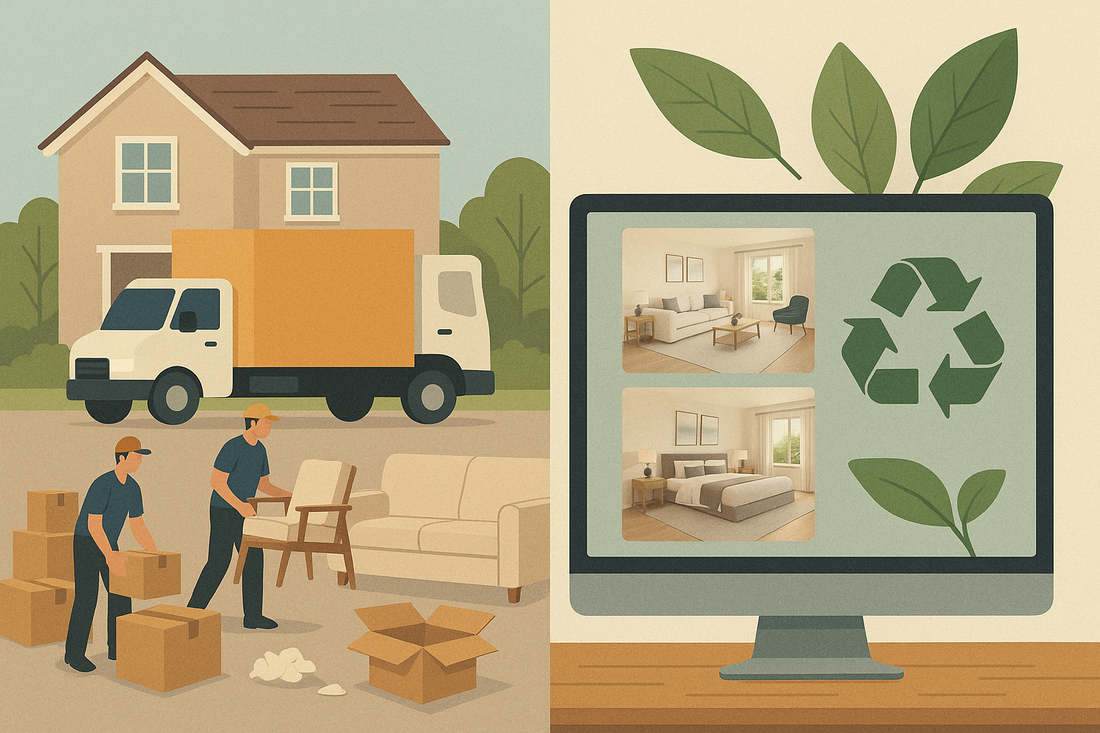
Eco-friendly Advantage: How Digital Staging Reduces Waste in Real Estate
Share
Sustainability has become more than a trend—it’s a necessity. From construction methods to energy-efficient appliances, the real estate industry is embracing eco-friendly practices at every stage of the property lifecycle. Yet one often-overlooked area is property staging, the art of making homes look appealing to buyers. Traditionally, staging involved renting furniture, moving décor in and out of homes, and generating a significant amount of waste. Today, however, digital staging offers a greener, smarter alternative that not only reduces environmental impact but also creates stunning results for sellers and agents.
What Is Digital Staging?
Digital staging uses advanced software to furnish and decorate empty or outdated spaces virtually. Professional designers take property photos and overlay them with realistic 3D furniture, artwork, and accessories. The end result is a beautifully styled image ready for online listings—without the need for physical furniture or materials.
The Environmental Costs of Traditional Staging
While effective in the past, traditional staging comes with hidden environmental drawbacks:
-
Transportation Emissions: Furniture must be delivered, installed, and later removed—adding to carbon emissions from trucks and vans.
-
Single-Use Waste: Temporary décor items like rugs, curtains, or accessories may be discarded after use.
-
Packaging Materials: Cardboard boxes, bubble wrap, and plastic film used to transport staging furniture often end up in landfills.
-
Energy Consumption: Frequent staging set-ups across multiple homes consume time, energy, and resources.
For large markets where staging is frequent, these impacts accumulate significantly.
How Digital Staging Reduces Waste
1. Eliminates Physical Furniture
Because digital staging is entirely virtual, there’s no need to rent or move actual furniture. This cuts down on manufacturing demand and avoids the disposal of items once they’re worn out.
2. Reduces Transportation Emissions
No trucks, movers, or packaging materials are needed. A few digital files replace dozens of trips, drastically lowering the carbon footprint of property marketing.
3. Minimizes Single-Use Décor Waste
In traditional staging, décor is often used only once or twice. Digital staging eliminates this waste by creating reusable digital assets that can be applied to countless listings.
4. Energy-Efficient Production
Modern rendering software is far more energy-efficient than physical logistics. A few hours of design work replaces days of labor-intensive staging, creating a leaner, cleaner process.
Beyond Sustainability: Added Benefits
Cost Savings
Digital staging costs a fraction of physical staging while still delivering polished, market-ready visuals. Sellers save thousands while enjoying the eco-friendly advantage.
Speed and Flexibility
Unlike traditional staging, which can take days, digital staging can be completed in 24–48 hours. Styles, colors, and layouts can be changed instantly without additional waste.
Broader Appeal
Agents can showcase multiple design options for the same room—modern, minimalist, or traditional—without physically switching furniture. This customization attracts a wider range of buyers.
The Green Marketing Edge
Eco-conscious buyers increasingly prefer sustainable practices, even in the marketing phase of a home sale. By highlighting digital staging as part of an eco-friendly approach, agents can:
-
Differentiate themselves in a competitive market.
-
Appeal to environmentally aware clients.
-
Demonstrate innovation and responsibility.
This added credibility strengthens both the property’s image and the agent’s reputation.
The Future of Staging
As real estate continues to embrace digital transformation, eco-friendly tools like digital staging will become the norm. Combined with other green initiatives—such as paperless contracts, virtual tours, and energy-efficient home features—digital staging helps the industry reduce its environmental footprint while still achieving marketing excellence.
Final Thoughts
Digital staging is more than just a cost-effective marketing tool—it’s a sustainable solution for a waste-conscious world. By eliminating the need for physical furniture, cutting transportation emissions, and minimizing single-use waste, it offers a clear eco-friendly advantage.
For agents and sellers, adopting digital staging isn’t just about keeping up with technology—it’s about aligning with the values of today’s environmentally conscious buyers. In doing so, they not only sell homes faster but also contribute to a greener, more sustainable real estate industry.
